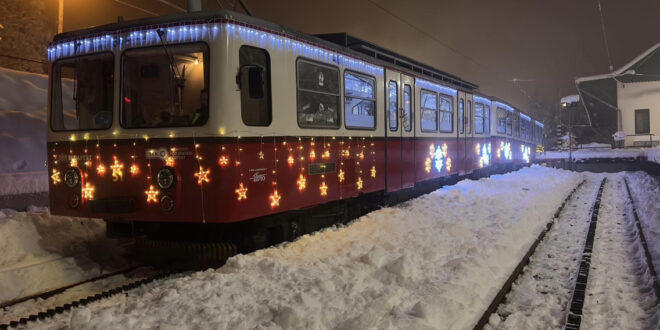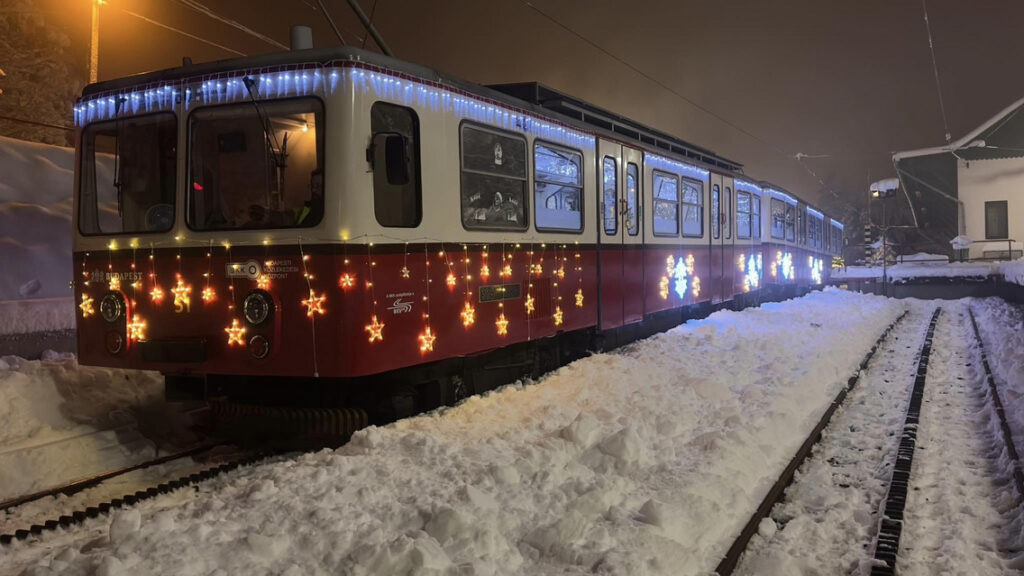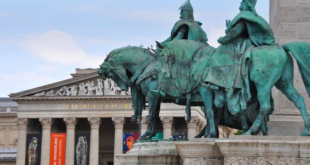The Budapest Cogwheel Railway or ‘Fogaskerekű’ in Hungarian is a unique form of transportation in the Budapest Public transportation system that takes visitors and locals alike from the bustling city to the forest covered hills of the Buda side. It leaves from Városmajor area near Széll Kálmán Square up into the peaceful Buda Hills, ending at Széchenyi Hill where Normafa awaits anyone wishing to get away from the bustling city. To get to the starting point of the Cogwheel from the city centre, you can get on the metro on Deak Square city centre, then after a change to a tram, the approx. time is 17-20 minutes.
Historical Ride
The Cogwheel Railway, numbered 60 and operated by BKK (Budapest Transport), was first constructed in 1874 to give residents easy access to what was then a mostly forested area, and it has since become a charming, historic way to see the city’s hilltop attractions.
Why is Cogwheel special?
What makes the Cogwheel particularly special is its cogwheel mechanism, which allows the train to navigate steep inclines, making it ideal for the mountainous terrain of the Buda Hills. The railway covers less than 4 kilometres but climbs 315 meters, offering passengers scenic views of the valley and city below.
It is also one of the means of transport that are mostly frequented by locals, off the beaten track. We think it is a hidden gem especially if the weather is fair or on snowy white Christmas days when you can enjoy some festive tranquility in the hills without venturing too far from the city. If you are visiting Budapest for the festive atmosphere from mid November, or in December, do not only put the Budapest Christmas Market or Budapest Christmas Concerts on your agenda. Taking a ride on a lit up Christmas Cogwheel or the Light Tram along the river Danube feels special.
How do Cogwheels work?
Cogwheels are special wheels with teeth, like the gears on a bike, that help trains go up really steep hills. Normally, wheels would just slide down a steep hill, but with cogwheels, the train can “bite” into a special track with matching teeth. This way, the train stays steady and doesn’t slide back, making it perfect for climbing mountains or steep places like the Buda Hills in Budapest!
Cogwheel Tickets & Tourist Passes
Travellers can use regular Budapest Public transport travel passes, single or return BKK tickets or Budapest Tourist Passes and Budapest Card passes, specifically made for tourists visiting Budapest. Under 14 it is free to ride the cogwheel, which runs year-round, making it both a tourist highlight and a convenient mode of transport for locals.
Cogwheel Route in Budapest
The route begins at Városmajor, easily accessible from Széll Kálmán Square by tram or bus, and winds through the charming villa neighbourhoods of Diósárok and Svábhegy in Budapest, areas known for their peaceful residential atmosphere and scenic surroundings. Along the way, you can hop off at Svábhegy Station for a beautiful view, also enjoyed by Sissi and her family, or to connect to the Children’s Railway, another popular tourist attraction operated by young “train staff.”
Stops along the Cogwheel include Városmajor, Szinva utca, Adonis utca, Diósárok, Ördög-orom, Esze Tamás iskola, Normafa, and finally Széchenyi Hill, where you’ll find spectacular panoramic views and access to hiking trails and other outdoor activities. Nearby attractions at the stations make it a perfect choice for travellers who want to explore the nature and history of Budapest.
Cogwheel – The Christmas Edition
Cogwheel has been given its own festive Christmas decoration first in 2023 in Budapest, thus joining the special vehicles of the Budapest public transport celebrating December festivities with the Christmas Tram of Budapest, the Christmas Buses and the Santa Trolley (Mikulastroli).
The Cogwheel in Budapest will provide a memorable ride to anyone visiting Budapest who likes travelling in nature on historical rides. The hillside trip will combine history, nature and sightseeing in one of Budapest’s most beautiful hilly areas.
 Budapest Tickets Online Tickets for Budapest Tours & Activities
Budapest Tickets Online Tickets for Budapest Tours & Activities






